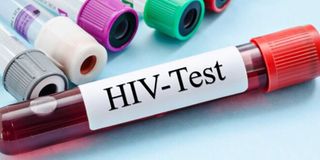HIV /AIDS, risk perception and the fading individual responsibility

Every year on December 1, nations all over the world observe World Aids Day to show support for individuals who are infected with the virus, to raise awareness of prevention among those who are healthy, and to express sympathy to the families of those who have lost loved ones to the illness. Inequalities that are preventing the progress in the battle against HIV/Aids were the focus of this year’s memorial.
The day provides an opportunity for public and private partners to raise more voices of advocacy for HIV/Aids prevention, treatment, and care throughout the world and to raise awareness about the pandemic’s situation.
Data from UNAIDS show that HIV/Aids, which has so far claimed more than 35 million lives, continues to be a serious global public health issue. Around 770, 000 persons worldwide passed away in 2018 due to HIV-related causes. With 25.7 million people living with HIV in 2018, the African continent continues to be the one most affected by the disease. Nearly two thirds of the world’s new HIV infections originate in the African region.
About 1.2 million Ugandans aged 15 to 64 are estimated to have HIV, according to the Uganda Population-Based HIV Impact Assessment (UPHIA), a household-based national survey carried out between August 2016 and March 2017 to evaluate the effectiveness of Uganda’s national HIV response. The prevalence of HIV is higher among women living in urban areas (9.8 percent) than it is among those living in rural areas (5.2 percent).
Although Uganda still has a long way to go before achieving validation for the elimination of mother to child transmission (eMTCT), which is made worse by a high prevalence of the disease among teenagers, it is undeniable that the overall burden has significantly and steadily decreased. For instance, the burden reached its high in the 1990s at 20 percent, dropped to 14 percent in the 2000s, and is now, according to UNAIDS, averaging at 7 percent.
The fight against HIV has benefited greatly from the efforts of national and international organisations like the World Health Organisation, Centers for Disease Control (CDC), governments, regional and national development partners, civil society and community-based organisations, the private sector, and other players in the health sector. For instance, the Ministry of Health-Uganda is currently implementing the HIV time up campaign with assistance from GAVI, USAID, and other partners with the goal of raising HIV risk perception among high-risk audiences and increasing the percentage of people at high risk of getting HIV who access testing services. It also attempts to inspire persons who test HIV-negative to adopt and maintain services and practices for HIV prevention. Despite all of these efforts, it seems like the route to success is taking longer than it should. The issue still stands: What have you personally done to support these initiatives to prevent the spread of the virus?
The health system was able to provide preventative and treatment services, preventing shocks, despite Covid-19’s minor effects on the continuity of health services, especially HIV/Aids. Consider one of the biggest obstacles in the fight against the HIV epidemic to be individual carelessness motivated by doubt about the hazards of HIV infection. It continues to surprise me that some Ugandans are still unaware of the dangers of getting the virus even after engaging in unprotected intercourse with someone whose status is unknown.
The idea that HIV-positive individuals can live for as long as an HIV-negative individual has reduced the perceived risk of the disease, encouraging an irresponsible lifestyle and behaviour as a risk factor for HIV susceptibility.
Unexpectedly, there is a misguided belief that the risk of transmission during unprotected sex is reduced or eliminated the more lubricated the woman’s genital organ is. This brings to mind the false belief that ailments like diabetes, hypertension, and others are only experienced by the wealthy and obese; sex performed while standing, in a lake, river, or pond, as well as other myths and misconceptions about the fight against HIV leave no place for HIV transmission.
It is astonishing that even individuals who are educated or uneducated and are aware of the disease’s risk factors and fundamental means of transmission appear not to take it seriously.
What can be improved to better deal with this chaos?
Every country is doing its best to combat the disease, but ultimately it is up to people to ponder on their future, reconsider their relationships with their loved ones, and act accordingly. If we do not, we’ll lose the battle and never reach the finish line.
It is also urgently necessary to revamp HIV awareness communication, developing creative behaviour modification messages that can effectively increase the perceived risk of HIV infection.
If this is not done, the money and efforts used over the past 10 years will be wasted, as the load will once again increase.
Daraus Bahikire is a public health (Health Promotion) specialist, founder and director at Purpose Health Care Africa (PHCAfrica), an organisation championing community-led disease interventions for suitable health and wellbeing.
Daraus Bahikire, MPH




